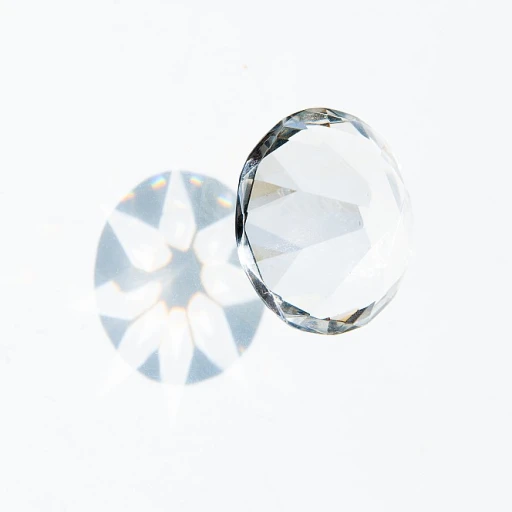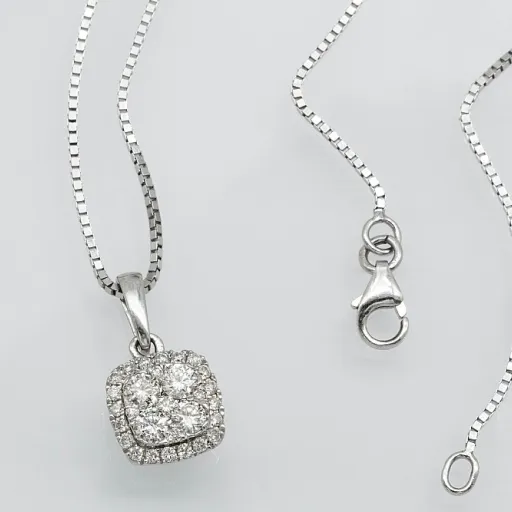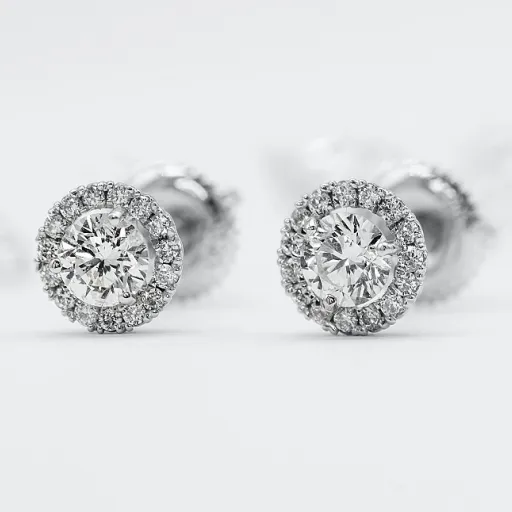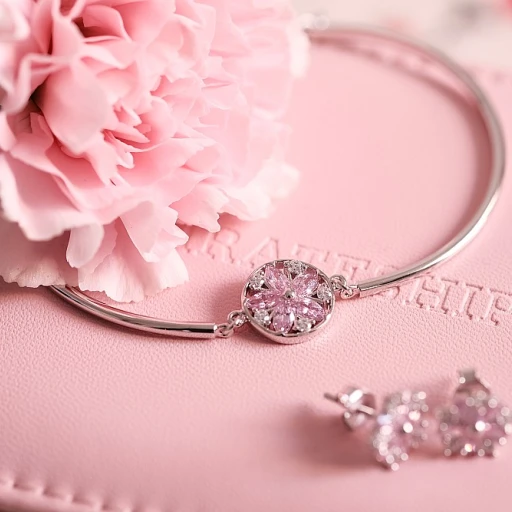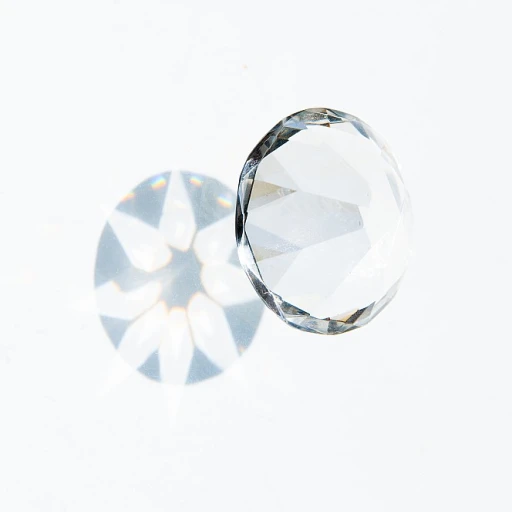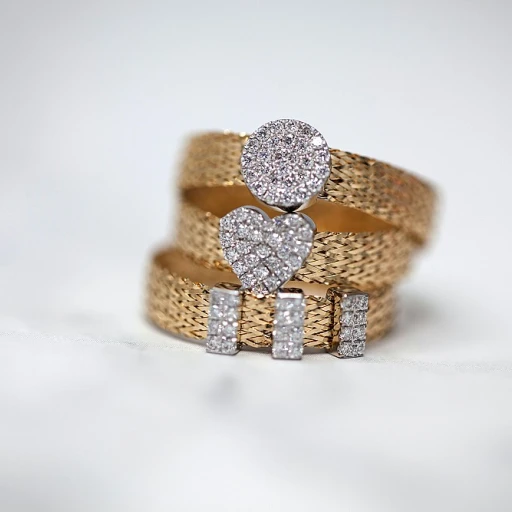
What sets rose gold plated metal apart in fine jewelry
The unique charm of rose gold plated metal
Rose gold plated metal has become a favorite in fine jewelry for its romantic pink hue and modern appeal. Unlike traditional yellow gold or white gold, the rose gold finish offers a warm, blush-toned look that stands out in rings, necklaces, and engagement rings. This distinctive color is achieved by blending gold with copper, giving the metal its signature rosy tint. The plating process allows for this beautiful shade to be applied over base metals like sterling silver or even other gold alloys, making it accessible without the price tag of solid gold.
What truly sets rose gold plated jewelry apart is its versatility. It pairs effortlessly with both gold and silver pieces, making it easy to mix and match in your collection. Whether you prefer classic gold jewelry or the contemporary look of jewelry rose, rose gold plating offers a fresh perspective. Many designers are now experimenting with rose gold plating on everything from karat gold to platinum, reflecting current design trends and customization options that will be explored later in this article.
- Affordability: Rose gold plated jewellery provides the look of real gold at a fraction of the cost, making it an attractive option for those who want the appearance of luxury without the investment of solid gold or pure gold.
- Durability: While not as long-lasting as solid gold or gold fill, high-quality plating over metals like sterling silver can offer a durable and beautiful finish with proper care.
- Design flexibility: The plating process allows for intricate designs and quick updates to classic styles, keeping up with evolving tastes in fine jewelry.
For those considering adding rose gold plated pieces to their collection, it's important to understand the differences between gold plated, gold filled, and solid gold. Each has its own benefits and care requirements, which will be discussed in more detail throughout this guide. If you're interested in exploring how rose gold plating compares to other gold finishes, you might enjoy this in-depth look at 14k gold bead bracelets for additional insights into gold jewelry trends.
How rose gold plating is achieved
The process behind the pink glow
Rose gold plated jewelry stands out for its warm, pinkish hue, but achieving this look is a precise process. The base metal—often sterling silver, brass, or another durable alloy—is first carefully cleaned and prepared. This ensures the gold plating will adhere smoothly and last longer. The actual plating involves a technique called electroplating. In this method, a thin layer of rose gold is deposited onto the base metal using an electric current. The rose gold itself is an alloy, typically a blend of pure gold and copper, sometimes with a touch of silver. The copper content is what gives rose gold its signature blush tone, setting it apart from yellow gold or white gold. The thickness of the plating can vary. Higher-quality plated jewellery will have a thicker layer of rose gold, which not only enhances the color but also improves durability. However, even the best plating is much thinner than solid gold or gold filled jewelry. This is why care is so important, as discussed in later sections.- Base metals: Common choices include sterling silver, brass, or copper alloys.
- Rose gold alloy: Usually a mix of pure gold (measured in karats), copper, and sometimes silver.
- Electroplating: The process that bonds the rose gold layer to the base metal.
- Thickness: Varies by manufacturer; thicker plating means better longevity.
Challenges of maintaining rose gold plated pieces
Why Rose Gold Plated Jewelry Needs Special Attention
Rose gold plated jewelry is celebrated for its warm pink hue and modern appeal, but it comes with unique challenges that owners should be aware of. Unlike solid gold or platinum, rose gold plating is a thin layer of gold—often alloyed with copper for that signature blush—applied over a base metal such as sterling silver or brass. This means the beautiful finish is more vulnerable to wear and tear than solid gold or even gold fill pieces.
- Plating Thickness: The thickness of the gold plating directly impacts durability. Thinner layers can fade quickly, especially on rings and bracelets that experience frequent contact.
- Base Metal Exposure: Over time, the underlying metal (like silver or brass) may become visible as the rose gold layer wears off. This is particularly noticeable on high-contact areas such as engagement rings or everyday jewelry.
- Reaction to Skin and Environment: Sweat, lotions, and even the pH of your skin can accelerate the fading of the rose gold plating. Exposure to water, perfumes, and cleaning agents can also dull the finish or cause discoloration.
- Maintenance Frequency: Rose gold plated jewellery requires more frequent care compared to solid gold or white gold pieces. Regular cleaning and gentle handling are essential to preserve its pink luster.
It’s important to note that while rose gold plated jewelry offers an accessible way to enjoy the look of gold rose or yellow gold, it will not last as long as solid gold or high-karat gold jewellery. Owners should manage expectations regarding longevity and be prepared for eventual replating if they want to maintain the original appearance.
For those who appreciate the artistry and heritage of fine jewelry, understanding these challenges is key to making informed decisions. If you’re interested in exploring more about the enduring value of classic jewelry pieces, discover the timeless elegance of real cameo rings and how they compare to modern plated styles.
Practical care tips for rose gold plated jewelry
Everyday Habits That Protect Your Rose Gold Plated Jewelry
Rose gold plated jewelry brings a unique pink glow to your collection, but it needs thoughtful care to keep its beauty. Unlike solid gold or platinum, plated pieces have a thin layer of gold rose over a base metal, often sterling silver or another alloy. This makes them more sensitive to daily wear and environmental factors.
- Keep it dry: Water, especially when mixed with soaps or chemicals, can cause the gold plating to fade or tarnish. Remove your rings and other jewelry before washing hands, showering, or swimming.
- Avoid harsh chemicals: Perfumes, lotions, and cleaning agents can react with the rose gold plating and the underlying metal. Apply beauty products first, let them dry, then put on your jewelry.
- Store with care: To prevent scratches and premature wear, store each piece separately in a soft pouch or lined jewelry box. Avoid letting gold plated jewelry rub against harder items like solid gold or platinum pieces.
- Clean gently: Use a soft, lint-free cloth to wipe your jewelry after each wear. For a deeper clean, use lukewarm water and a mild soap, but never soak the piece. Dry it immediately and thoroughly.
- Rotate your collection: Wearing the same rose gold plated ring or necklace every day will speed up wear on the plating. Alternate with other pieces, such as yellow gold or white gold jewelry, to extend the life of each item.
When to Seek Professional Help
If you notice significant fading or the base metal showing through, a professional jeweler can often replate your jewelry. This process restores the pink hue and shine, making your piece look almost new. Always choose a reputable jeweler experienced with gold plating, especially for items like engagement rings or sentimental jewellery.
Quick Tips for Long-Lasting Shine
- Remove jewelry before physical activities to avoid knocks and sweat exposure.
- Check clasps and settings regularly, as wear on the plating can affect their security.
- Be mindful of karat gold differences; higher karat gold plating is softer and may wear faster than lower karat or gold filled options.
By following these care tips, your rose gold plated jewelry will maintain its alluring pink glow and remain a cherished part of your collection, whether it’s a simple ring or an intricate piece paired with white gold or yellow gold accents.
Assessing the value and investment potential
Evaluating Worth: Rose Gold Plated Jewelry in the Market
When considering the value and investment potential of rose gold plated jewelry, it is essential to understand how it compares to solid gold, gold filled, and other precious metal pieces. The allure of rose gold plating lies in its beautiful pink hue and affordability, but these factors also influence its market position.- Material composition: Rose gold plated jewelry typically features a base metal such as brass, copper, or sterling silver, coated with a thin layer of rose gold. This gold plating is usually much thinner than what you find in gold filled or solid gold jewellery.
- Gold content: The karat value of the plating (often 14k or 18k) refers only to the outer layer, not the entire piece. This means the intrinsic value is lower compared to solid gold or even gold filled jewellery, where the gold layer is much thicker.
- Durability and longevity: With proper care, rose gold plated rings, engagement rings, and other pieces can maintain their appearance for a reasonable period. However, the plating will eventually wear off, especially with frequent use or exposure to moisture and chemicals.
- Resale and investment: Rose gold plated jewellery is generally not considered an investment asset like solid gold, platinum, or even white gold pieces. Its resale value is limited, as buyers often prioritize gold real content and durability.
- Design and trend value: Despite lower intrinsic value, rose gold plated jewelry remains popular for its quick access to on-trend designs and customization options. This makes it appealing for those seeking variety and style without the high price tag of pure gold or solid gold items.
| Type | Gold Content | Durability | Investment Potential |
|---|---|---|---|
| Rose Gold Plated | Thin outer layer (karat gold) | Moderate (with care) | Low |
| Gold Filled | Thicker gold layer | Higher | Moderate |
| Solid Gold | Entire piece (karat gold) | Very high | High |
| Platinum | Pure platinum | Very high | High |
| Sterling Silver | 92.5% silver | High | Moderate |
Customization and design trends in rose gold plated metal
Personalization in Rose Gold Plated Jewelry
Rose gold plated metal has become a favorite for those seeking a unique twist on classic gold jewelry. The warm pink hue of rose gold plating offers a modern yet timeless look, making it a popular choice for both everyday wear and special occasions. Customization options are vast, allowing owners to express their individual style while enjoying the affordability and versatility of plated jewellery.
- Mixing Metals: Designers often blend rose gold plating with white gold, yellow gold, or even sterling silver. This creates striking two-tone or tri-color pieces, especially in rings and engagement rings, that stand out from traditional solid gold or platinum options.
- Engraving and Personal Touches: Many jewelers offer engraving on rose gold plated jewelry, from initials to meaningful dates. While care is needed to avoid wearing down the plating, these touches add sentimental value.
- Gemstone Pairings: The soft pink of rose gold plating beautifully complements a range of gemstones, from classic diamonds to colored stones like morganite or sapphire. This flexibility allows for creative, personalized designs in both fine and fashion jewelry.
- Layering and Stacking: Rose gold plated rings and bracelets are often designed for stacking with other metals, such as white gold or yellow gold. This trend lets wearers create their own combinations and adapt their look quickly for different occasions.
Design Trends and What to Watch
Current trends in rose gold plated jewelry reflect a blend of innovation and tradition. Minimalist designs with clean lines are popular, as are vintage-inspired pieces that highlight the romantic appeal of pink gold. Many brands are experimenting with textured finishes, matte plating, and mixed metal settings to keep collections fresh and appealing.
For those considering custom pieces, it is important to remember that the base metal beneath the plating—often silver, copper, or another alloy—can influence both the appearance and longevity of the jewelry. While rose gold plating offers a quick way to achieve a luxury look, proper care is essential to maintain its beauty over time. As discussed earlier, gentle cleaning and mindful storage will help preserve the finish and keep your jewelry looking its best.
Whether you prefer bold statement rings or delicate layered necklaces, rose gold plated jewelry offers endless opportunities for personalization and creative expression, all while remaining accessible compared to solid gold or platinum alternatives.

